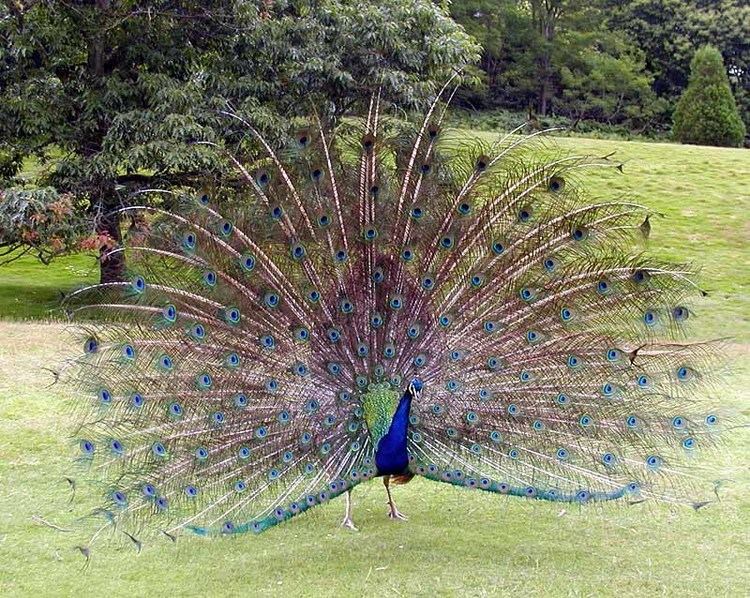 | ||
Secondary sex characteristics are features that appear during puberty in humans, and at sexual maturity in other animals. These are particularly evident in the sexually dimorphic phenotypic traits that distinguish the sexes of a species, but unlike the sex organs, are not directly part of the reproductive system. They are believed to be the product of sexual selection for traits which display fitness, giving an individual an advantage over its rivals in courtship and aggressive interactions. They are distinguished from the primary sex characteristics, the sex organs, which are directly necessary for sexual reproduction to occur.
Contents
Secondary sex characteristics include manes of male lions and long feathers of male peacock, the tusks of male narwhals, enlarged proboscises in male elephant seals and proboscis monkeys, the bright facial and rump coloration of male mandrills, and horns in many goats and antelopes, and these are believed to be produced by a positive feedback loop known as the Fisherian runaway produced by the secondary characteristic in one sex and the desire for that characteristic in the other sex. Male birds and fish of many species have brighter coloration or other external ornaments. Differences in size between sexes are also considered secondary sexual characteristics.
In humans, visible secondary sex characteristics include pubic hair, enlarged breasts of females, and facial hair and Adam's apple on males.
Evolutionary roots
Charles Darwin hypothesized that sexual selection, or competition within a species for mates, can explain observed differences between sexes in many species. Biologists today distinguish between "male-to-male combat" and "mate choice", usually female choice of male mates. Sexual characteristics due to combat are such things as antlers, horns, and greater size. Characteristics due to mate choice, often referred to as ornaments, include brighter plumage, coloration, and other features that have no immediate purpose for survival or combat.
Ronald Fisher, the English biologist developed a number of ideas concerning secondary characteristics in his 1930 book, including the Fisherian runaway, which postulates that the desire for a characteristic in females combined with that characteristic in males can create a positive feedback loop or runaway where the feature becomes hugely amplified. The 1975 handicap principle extends this idea, pointing out that a peacock's tail, for instance, displays fitness by being a useless impediment that it is very hard to fake. Another Fisher idea is the sexy son hypothesis, whereby females will desire to have sons that possess the characteristic that they find sexy in order to maximize the number of grandchildren they produce. An alternative hypothesis is that some of the genes that enable males to develop impressive ornaments or fighting ability may be correlated with fitness markers such as disease resistance or a more efficient metabolism. This idea is known as the good genes hypothesis.
Male jumping spiders have visual patches of UV reflectance, which are ornamentations used to attract females.
In humans
Sexual differentiation begins during gestation, when the gonads are formed. The general structure and shape of the body and face, as well as sex hormone levels, are similar in preadolescent boys and girls. As puberty begins and sex hormone levels rise, differences appear, though some changes are similar in males and females. Male levels of testosterone directly induce the growth of the genitals, and indirectly (via dihydrotestosterone (DHT)) the prostate. Estradiol and other hormones cause breasts to develop in females. However, fetal or neonatal androgens may modulate later breast development by reducing the capacity of breast tissue to respond to later estrogen.
Females
In females, breasts are a manifestation of higher levels of estrogen; estrogen also widens the pelvis and increases the amount of body fat in hips, thighs, buttocks, and breasts. Estrogen also induces growth of the uterus, proliferation of the endometrium, and menses.
Males
In males, testosterone directly increases size and mass of muscles, vocal cords, and bones, deepening the voice, and changing the shape of the face and skeleton. Converted into DHT in the skin, it accelerates growth of androgen-responsive facial and body hair but may slow and eventually stop the growth of head hair. Taller stature is largely a result of later puberty and slower epiphyseal fusion.
